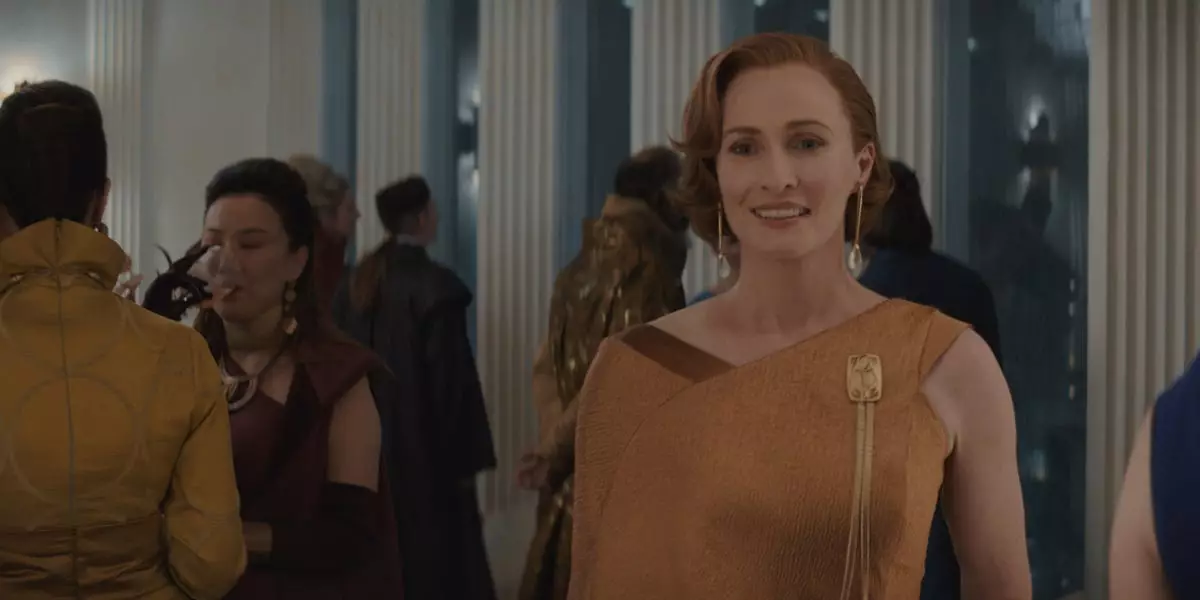Andor, the latest addition to the Star Wars universe, embraces a narrative that stands in stark contrast to the grandiose space battles typically associated with the franchise. This series, set against the backdrop of an oppressive empire, delves into the intricacies of rebellion and the personal sacrifices that its protagonists must endure. Showrunner Tony Gilroy refers to Andor as a “story about revolution, and the making of a revolutionary,” highlighting that it is less about the fate of entire galaxies and more about the human experience—how individuals muster the courage to rise against tyranny.
The narrative centers on Cassian Andor, portrayed with depth and complexity by Diego Luna. Unlike many of the iconic heroes in the Star Wars saga, Cassian is painted as a flawed, relatable character. The challenges he faces—both morally and practically—illustrate the difficult choices that individuals in the thawing grip of oppression must make. As Gilroy poignantly notes, “Every revolution I ever read about, the primary concern is where the resources come from.” Andor unapologetically confronts this reality, exploring the often unacknowledged logistics and ethical dilemmas faced by rebels.
Multi-Layered Storytelling that Defies Expectations
The beauty of Andor lies not only in its story but also in its narrative structure. Gilroy has crafted a screenplay that is dynamically adaptive, filled with “layers” that build upon one another, prompting the audience to reassess their understanding of heroism and morality. This ongoing transformation keeps viewers engaged, pushing them to reconsider the very nature of resistance.
The series shows that revolution is not merely an explosion of violence but a complex tapestry woven from moments of camaraderie, fear, and stark decision-making. In a recent interview, Luna described the writing as something that “keeps changing” and revealed its capacity to surprise, keeping the audience at the edge of their seats. Each episode brings fresh perspectives, allowing viewers to witness the evolution of characters while monumental shifts occur within the rebellion itself.
A Grounded Perspective in an Expansive Universe
Genevieve O’Reilly’s evocative portrayal of Mon Mothma introduces a familial and deeply human element to the interstellar conflict. Her analogy of Andor feeling “like I’m in Downton Abbey in Star Wars” aptly encapsulates the intimate storytelling at play within its grandiose setting. Despite occupying a celestial stage, the emotional stakes and moral dilemmas of the characters feel exceptionally grounded. The show presents a universe that, while vast, is populated by relatable individuals whose vulnerabilities mirror our own.
Unlike traditional Star Wars installments that demand a depth of lore that might alienate casual viewers, Andor boasts an innovative accessibility. Gilroy’s narrative design ensures that anyone can dive into the series without requisite knowledge of the extensive franchise. This democratization of storytelling allows a broader audience to engage with complex themes of resistance, community, and personal sacrifice—issues that resonate deeply in contemporary society.
The Rise of a Unified Rebellion
As Season 2 unfolds, it ambitiously traces the trajectory of disparate resistance movements coalescing into a unified force against an oppressive regime. This second installment, consisting of 12 episodes strategically divided into four three-episode arcs, serves to meticulously depict the rise of a full-fledged rebellion. Each arc represents critical moments in history, accentuating the urgency and intensity of characters’ emotional journeys as they navigate through fear, hope, and determination.
The time jumps introduced in Season 2 are particularly noteworthy. Gilroy explains how these shifts keep the pacing taut while enabling significant transformations in character arcs. Each three-day span is teeming with tension and opportunity for development, which challenges the viewer to remain invested in the narrative’s evolution.
As the series progresses, a sense of camaraderie among characters emerges, intricately woven into the heart of rebellion. Andor embraces and illustrates the notion that communities are built through shared struggles, a timeless theme that solidifies its universally relatable narrative. New episodes debut weekly on Disney+, with viewers treated to three episodes at a time—the perfect pacing to reflect the mounting tension ensnaring Andor and his cadre of unconventional heroes.
The unique approach of Andor—both in narrative structure and thematic depth—signals a remarkable departure from its franchise predecessors, earning its rightful place as a meditation on the complexities inherent in revolution. It challenges the audience to grapple with the realities of power, agency, and interconnectedness in a universe defined by conflict.

